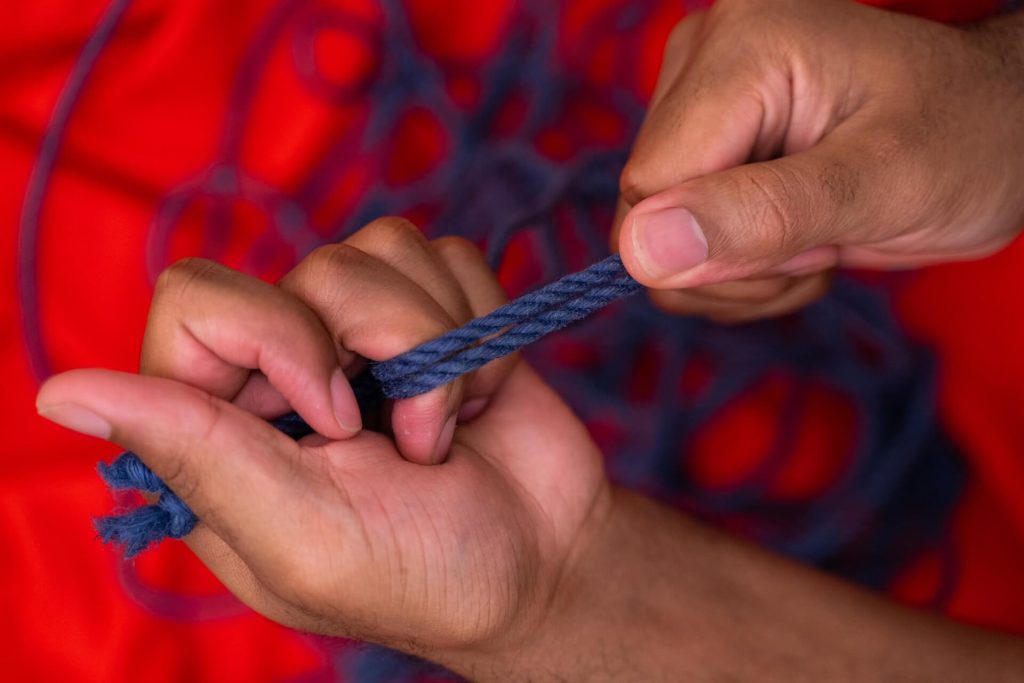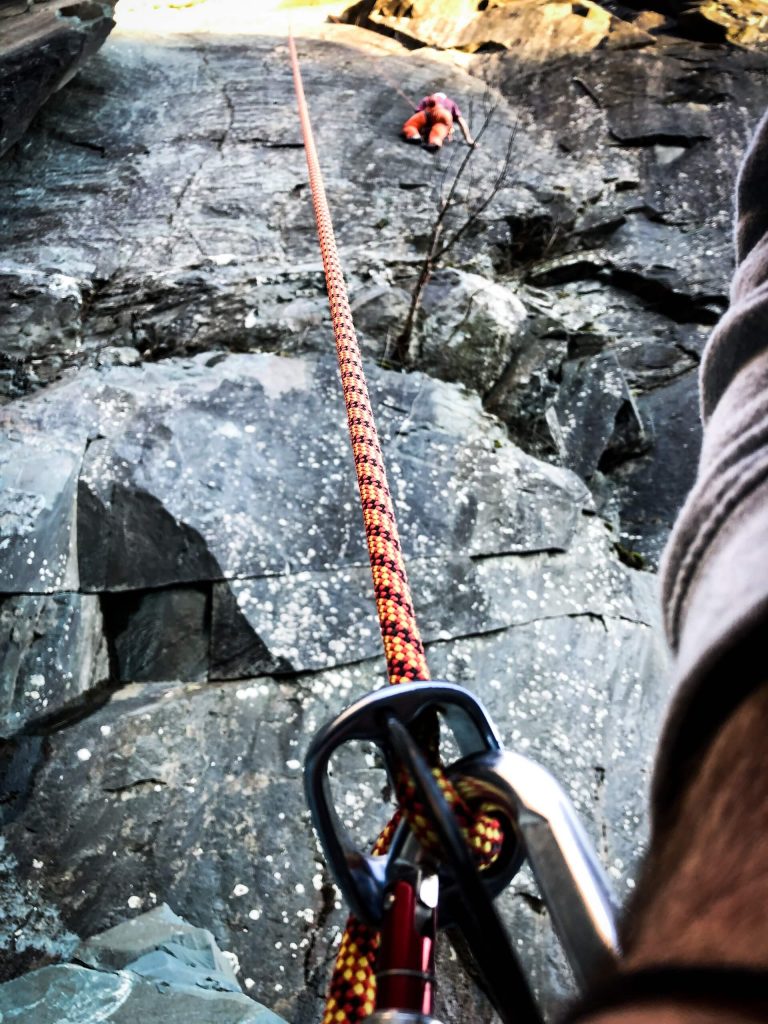Last Updated on May 18, 2023 by Mark S. Taylor
When venturing off-road or engaging in activities such as off-roading, rock crawling, or mud bogging, there is always a risk of getting stuck in challenging terrains. In such situations, having the right equipment for vehicle recovery is crucial. One essential tool for off-road enthusiasts is a reliable kinetic recovery rope.

Contents
Understanding What a Kinetic Recovery Rope Is
A kinetic recovery rope, also known as a snatch rope or kinetic rope, is a specialized tool designed to safely recover stuck vehicles. Unlike traditional tow straps or chains, which have limited elasticity, a kinetic recovery rope is made of high-strength nylon or polyester materials with significant stretch capabilities.
The unique feature of a kinetic recovery rope lies in its ability to store and release kinetic energy during the recovery process. When the rope is subjected to tension as the recovering vehicle accelerates, it stretches and absorbs energy. This energy is then released when the rope contracts back to its original length, generating a powerful pulling force to help free the stuck vehicle.
The elasticity of a kinetic recovery rope is crucial as it reduces the jarring impact and shock load on both the recovering and stuck vehicles. This minimizes the risk of damage to the vehicles’ frames, bumpers, and other components, making it a safer and more effective recovery method compared to rigid towing methods.
Read More: How To Shoot Flames From Exhaust
Key Benefits of a Reliable Kinetic Recovery Rope:
- Enhanced Safety: A reliable kinetic recovery rope is designed with safety in mind. The elasticity helps prevent sudden jolts and jerks, reducing the risk of vehicle damage and personal injury during the recovery process.
- Increased Effectiveness: The kinetic energy generated by the rope’s stretch allows for a more effective and efficient recovery. It provides a dynamic and powerful pulling force, making it easier to free a stuck vehicle from challenging terrains like mud, sand, or snow.
- Versatility: Kinetic recovery ropes are suitable for a wide range of off-road vehicles, including trucks, SUVs, and Jeeps. They can be used in various off-road recovery situations and are particularly useful for self-recovery or assisting other stuck vehicles.
- Lightweight and Compact: Kinetic recovery ropes are typically lighter and more compact than alternative recovery tools like chains or heavy-duty tow straps. This makes them easier to carry and store in your off-road vehicle, ensuring you have the necessary equipment whenever needed.
- Durability: High-quality kinetic recovery ropes are built to withstand the demands of off-road recovery. They are constructed from strong and durable materials, capable of withstanding harsh conditions and repeated use.
In summary, Its unique stretch and energy-absorbing properties, combined with improved safety and effectiveness, make it an indispensable tool for vehicle recovery in challenging terrains. Whether you’re an avid off-roader or someone who occasionally ventures off the beaten path, investing in a quality kinetic recovery rope is a wise decision to ensure a smooth and safe off-road experience.

Factors to Consider When Choosing the Best Kinetic Recovery Rope:
- Strength and Load Capacity: Consider the strength and load capacity of the kinetic recovery rope. It should be able to handle the weight and force exerted during vehicle recovery. Look for ropes with a high breaking strength and load rating that matches your vehicle’s weight.
- Length and Diameter: Choose a kinetic recovery rope with an appropriate length and diameter. The length should be sufficient to provide a safe distance between vehicles during the recovery process. The diameter should be suitable for your vehicle’s weight and the terrain you typically encounter.
- Material and Construction: Kinetic recovery ropes are typically made of nylon or polyester. Consider the quality of the material and construction to ensure durability and longevity. Look for ropes with reinforced eyes or protective sleeves to prevent wear and tear.
- Elasticity and Stretch: The elasticity and stretch capacity of the rope are crucial for effective vehicle recovery. Opt for a rope with a significant stretch capability to generate the necessary kinetic energy. It should be able to absorb and release energy smoothly during the recovery process.
- Safety Features: Check for additional safety features, such as colored markings or indicators to show when the rope is near its maximum stretch limit. This helps prevent overstretching and potential rope failure.
- Storage and Portability: Consider the ease of storage and portability of the kinetic recovery rope. Look for ropes that are lightweight and compact, allowing you to carry and store them conveniently in your off-road vehicle.
- Brand Reputation and Reviews: Research the reputation of the brand and read reviews from other off-road enthusiasts who have used the kinetic recovery rope. Pay attention to feedback regarding reliability, performance, and durability.

Top 5 Kinetic Recovery Ropes for Off-Roading Adventures (in no particular order):
ARB 4×4 Accessories Snatch Strap: Known for their high-quality off-road equipment, ARB offers a reliable snatch strap with a high stretch capacity and reinforced eyes for added durability.
Bubba Rope Recovery Rope: Bubba Rope is a well-known brand in the off-road community. Their recovery ropes are made of premium-quality materials and come in various lengths and load ratings to suit different vehicles.
Smittybilt Kinetic Recovery Rope: Smittybilt offers a range of kinetic recovery ropes that combine durability and performance. Their ropes have excellent stretch capabilities and are designed for heavy-duty off-road recovery.
TGL 3-inch, 30ft Recovery Strap: The TGL recovery strap features a durable nylon construction with reinforced eyes. It offers a good balance of strength, elasticity, and affordability.
Rhino USA Recovery Tow Strap: While not specifically marketed as a kinetic recovery rope, the Rhino USA Recovery Tow Strap is a high-strength option that can provide effective recovery. It is made of premium materials and has a high load capacity.
Please note that the selection of kinetic recovery ropes may vary based on availability, personal preferences, and specific needs. It is recommended to compare different models, considering the factors mention.
Read More: How to Choos The Best Tool Backpack For HVAC
Detailed Review of the Best Kinetic Recovery Ropes:
ARB 4×4 Accessories Snatch Strap:
Breaking Strength: Available in different breaking strengths, such as 17,500 lbs or 33,000 lbs.
Length: Available in various lengths, typically ranging from 20 to 30 feet.
Features: Made from durable nylon webbing, reinforced eyes for added strength, and a high-stretch design for maximum kinetic energy transfer.
Bubba Rope Recovery Rope:
Breaking Strength: Available in different breaking strengths, such as 19,000 lbs or 28,600 lbs.
Length: Available in various lengths, typically ranging from 20 to 30 feet.
Features: Constructed from high-quality materials, such as nylon or polyester, with a unique Gator-ize coating for increased protection and durability. It has an excellent stretch capability and is highly resistant to UV, water, and abrasion.
Smittybilt Kinetic Recovery Rope:
Breaking Strength: Available in different breaking strengths, such as 20,000 lbs or 30,000 lbs.
Length: Available in various lengths, typically ranging from 20 to 30 feet.
Features: Made from high-strength nylon material, reinforced eyes, and a stretch design that generates maximum kinetic energy. It is UV-resistant, lightweight, and easy to handle.
TGL 3-inch, 30ft Recovery Strap:
Breaking Strength: 30,000 lbs breaking strength.
Length: 30 feet.
Features: Made from durable nylon, reinforced loops, and a high-stretch design for effective kinetic energy transfer. It is weather-resistant, lightweight, and suitable for various off-road recovery applications.
Rhino USA Recovery Tow Strap:
Breaking Strength: Available in different breaking strengths, such as 20,000 lbs or 31,518 lbs.
Length: Available in various lengths, typically ranging from 20 to 30 feet.
Features: Constructed from high-quality polyester, reinforced loops, and a stretch design that provides reliable recovery performance. It is highly durable, weather-resistant, and easy to handle.
How to Use a Kinetic Recovery Rope:
- Ensure Safety: Before using a kinetic recovery rope, ensure the safety of all individuals involved. Clear the area of bystanders and ensure everyone is at a safe distance from the vehicles.
- Secure Attachments: Attach one end of the kinetic recovery rope to the recovery point on the stuck vehicle. Ensure a secure attachment, preferably using a rated D-ring or recovery point. Attach the other end to the recovery point on the recovery vehicle.
- Communicate: Establish clear communication between the drivers of both vehicles. Use agreed-upon hand signals or radios to ensure a coordinated recovery process.
- Apply Tension: The recovery vehicle should gradually apply tension by accelerating slowly and steadily. This will stretch the kinetic recovery rope and generate kinetic energy.
- Assist the Stuck Vehicle: The driver of the stuck vehicle should attempt to gain traction while the recovery vehicle applies tension. Engage low gear, gently accelerate, and allow the rope to pull the vehicle. Avoid sudden jerks or rapid acceleration.
- Recovery Process: Once the kinetic energy is released and the stuck vehicle gains momentum, both drivers should communicate and coordinate to guide the recovery process. Maintain a safe distance and speed to ensure a controlled recovery.
Safety Tips While Using a Kinetic Recovery Rope:
- Wear Protective Gear: Always wear appropriate protective gear, including gloves and eye protection, while using a kinetic recovery rope.
- Avoid Excessive Force: Do not exceed the rated capacity of the kinetic recovery rope or the recovery points on the vehicles
Conclusion: Choosing the right kinetic recovery rope for your off-roading adventures
Choosing the right kinetic recovery rope for your off-roading adventures is crucial to ensure safe and effective vehicle recovery. Consider the following factors to make an informed decision:
Strength and Load Capacity: Select a kinetic recovery rope with a breaking strength and load rating that matches the weight and size of your vehicle.
Length and Diameter: Choose a rope with an appropriate length to provide a safe distance between vehicles during recovery. The diameter should be suitable for your vehicle’s weight and the terrain you encounter.
Material and Construction: Look for ropes made of high-quality materials like nylon or polyester, with reinforced eyes or protective sleeves for added durability.
Elasticity and Stretch: Opt for a rope with significant stretch capabilities to generate the necessary kinetic energy for efficient recovery. It should smoothly absorb and release energy without sudden jolts.
Safety Features: Consider ropes with safety features like colored markings to indicate maximum stretch limits, helping prevent overstretching and potential rope failure.
Storage and Portability: Choose a rope that is lightweight and compact for easy storage and portability in your off-road vehicle.
Brand Reputation and Reviews: Research the reputation of the brand and read reviews from other off-road enthusiasts to gauge the reliability, performance, and durability of the kinetic recovery rope.
By carefully considering these factors, you can choose the right kinetic recovery rope that suits your off-roading needs and provides a safe and efficient means of vehicle recovery in challenging terrains. Remember to follow proper usage guidelines.
